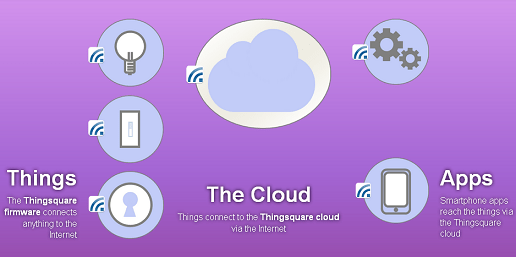The cloud is drastically changing the information technology (IT) landscape. Companies such as Salesforce.com and Amazon Web Services (AWS) are rapidly transforming customer relationship management (CRM) and web hosting. They are also challenging Oracle and IBM in the process. What is the cloud and how will it impact the test and measurement industry?
The cloud simply represents a large number of computing servers connected together via some communication infrastructure. Cloud computing moves software applications, services, and sometimes just data offsite to a centralized location that is usually managed by a vendor. Though it has mainly impacted IT and commercial applications so far, the cloud is well positioned to have a similarly transformative effect on automated test in the coming years.
CLOUD COMPUTING
Vendors such as AWS and IBM provide three basic types of cloud computing service models: Infrastructure as a Service (IaaS), Platform as a Service (PaaS), and Software as a Service (SaaS). These models offer an increasing set of capabilities and help users offload parts of their hardware and software stack ranging from the servers and the OS to the actual software application. For IaaS, the most basic cloud service model, the vendor offers the fundamental computing infrastructure such as servers, virtual machines, and storage. The user is responsible for providing an OS and the rest of the software stack. PaaS and SaaS build on the IaaS offering, with SaaS allowing most of the hardware and software stack to be managed by a vendor.
A good example of the SaaS model is Google Docs and Gmail. Users, via their web browsers, can access email, edit, store, and share various formats of documents, regardless of where they are and which computing device they use. Many corporations are actively moving their
corporate email and other desktop productivity applications to web-based services because it reduces their investment and maintenance costs for complex desktop applications.
The benefits of cloud computing in the IT space are clear. Organizations can use it to optimize their hardware and software investment by paying for only what they need, easily scaling up or down their capacity to adjust to business changes, and minimizing their sustaining burden.
APPLYING CLOUD COMPUTING TO AUTOMATED TEST
Every automated test system has at least one computing system that centrally controls all the instrumentation hardware and automates the testing or measuring procedure. PCs in various form factors, such as desktops, workstations, and industrial and embedded systems, have been used for this purpose.
Automated test systems will take advantage of cloud computing to process, store, analyze, and present test data such as data from measurement devices, data generated during the functional test of an electronic device, or perhaps data on the health of the automated test system itself. Automated Test Outlook 2013 described a concept called Big Analog Data™, which says raw data generated by automated test systems can be harnessed to provide real meaningful information in a way that has not been possible before.
By leveraging the cloud, organizations can push raw data from all their automated test systems to the cloud for centralized processing, storage, and analysis. With data available from all sites and all systems for anyone’s consumption, organizations can be more intelligent about the status of their test systems. Also, test engineers and managers can identify emerging trends in real time and proactively make decisions regarding parameters such as test station yield or test station health.
Besides test data management, an even more profound use of cloud computing for automated test will be the transformation of the development, deployment, and execution of actual test routines or sequences. Similar to how the IT industry is moving from desktop applications running on dedicated local servers to web-based applications running in the cloud, automated tests will move toward the web-based development of test programs that, once deployed, execute in the cloud while interacting with the measurement hardware of a specific test system.
This transformation of the software stack for automated test systems will provide similar benefits to test departments that IT departments of various organizations are already realizing. Test organizations will have the ability to pay for the exact amount of computing performance and software licenses they are using. These resources will be highly elastic and scale up or down depending on required capacity.
Test engineers can also focus more on their core functions and not waste time managing the local computing system in the automated test system. Support for existing test frameworks will be a key barrier to adoption for cloud-based automated test. Less intrusive cloud service models such as IaaS or PaaS can be deployed with a full cloud-based model of SaaS to address this challenge. Organizations that are concerned about software IP and data security along with system uptime can deploy a private cloud. A private cloud represents a cloud computing platform that is implemented within the organization’s local firewall and managed by its own IT department.
Over the next three to five years, the test and measurement industry will start seeing more cloud based development platforms beginning to unlock the full range of benefits for automated test systems. Various companies, including National Instruments, have already started offering products and services for test data management. Low upfront investment and the flexible capacity of cloud-based services will minimize the barrier to entry for other services tailored to meet the needs of test organizations seeking additional services or planning for future expansion.














